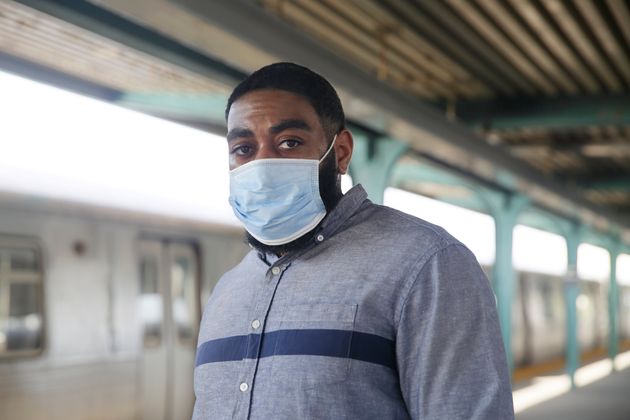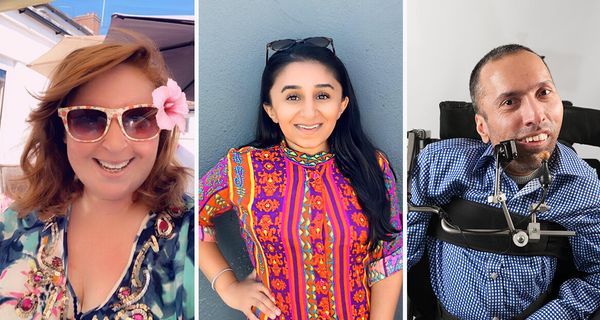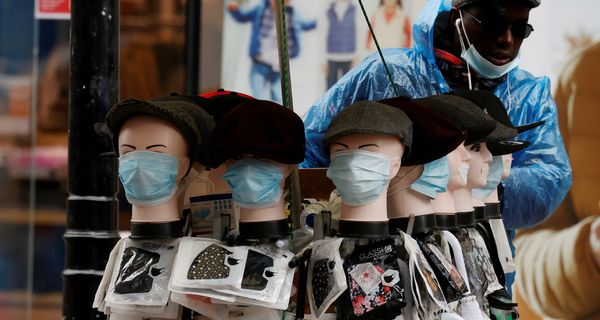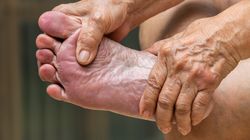Having diabetes can put people at increased risk of serious illness and death from coronavirus – yet the people at highest risk from Covid-19 in this group are still not on the shielding list.
It’s something charities are looking to change. Diabetes UK and type 1 diabetes charity JDRF have joined forces to call for urgent protections for certain groups impacted by diabetes, including an immediate extension of the shielding list.
In the UK, people who are shielding are urged to stay at home as much as possible. They get access to financial protections, such as furlough and Statutory Sick Pay, so they don’t have to go to work and put themselves at risk.
While the charities are not calling for all people with diabetes to be added to the shielding list – as not everyone with diabetes is at equal risk – they are asking for the following groups to be included as a matter or urgency.

1. People aged 50 or older with any type of diabetes
We all know by now that older age raises the risk for serious illness and even death from Covid-19 – this is also true for the diabetes population.
A NHS England study showed that Covid-19 mortality risk increases significantly from 50 years of age. In the period of March-May 2020, only 5%
of Covid-19 deaths in people with type 1 diabetes and 1.1% of deaths in people with type 2 diabetes occurred in people aged 49 years and younger.
2. People who have a HbA1c of 75mmol/mol (9%) or more
HbA1c represents average blood glucose levels for the last two to three months. A level of 48mmol/mol (6.5%) or below is ideal for people with diabetes. However, higher HbA1c levels are associated with an increased risk of
serious diabetes complications now and in the future.
UK populations studies have consistently shown that risk of serious illness or death from Covid-19 is increased in people with diabetes who have suboptimal HbA1c levels, and that risk rises as HbA1c does.
3. People who have received treatment for a diabetes-related complication
Risk of serious illness or death from Covid-19 is also increased in people with diabetes who have a history of chronic and/or acute diabetes complications.
Chronic complications tend to develop gradually and involve microvascular and macrovascular damage to the heart, brain, kidneys, eyes and feet.
Acute complications are associated with unstable diabetes control and can lead to chronic complications.
The charities have written to the four chief medical officers in the UK, making the case that people who meet the criteria should be categorised as clinically extremely vulnerable, and should be immediately included in the shielding list.
“One in three people who have sadly died from coronavirus had diabetes,” said Diabetes UK’s chief executive Chris Askew OBE, and JDRF’s chief executive Karen Addington, in a joint statement.
“People with diabetes who are at highest risk of hospitalisation or death from coronavirus, and who cannot work from home, are being forced to make impossible decisions about their income and their health every day; this is where the protections of shielding are most acutely needed.”
People with the following conditions are currently deemed clinically extremely vulnerable and so can receive shielding support:
- solid organ transplant recipients
- people with specific cancers:
- people with cancer who are undergoing active chemotherapy
- people with lung cancer who are undergoing radical radiotherapy
- people with cancers of the blood or bone marrow such as leukaemia, lymphoma or myeloma who are at any stage of treatment
- people having immunotherapy or other continuing antibody treatments for cancer
- people having other targeted cancer treatments that can affect the immune system, such as protein kinase inhibitors or PARP inhibitors
- people who have had bone marrow or stem cell transplants in the last 6 months or who are still taking immunosuppression drugs
- people with severe respiratory conditions including all cystic fibrosis, severe asthma and severe chronic obstructive pulmonary disease (COPD)
- people with rare diseases that significantly increase the risk of infections, such as severe combined immunodeficiency (SCID), homozygous sickle cell disease
- people on immunosuppression therapies sufficient to significantly increase risk of infection
- problems with your spleen, for example splenectomy (having your spleen removed)
- adults with Down’s syndrome
- adults on dialysis or with chronic kidney disease (stage 5)
- women who are pregnant with significant heart disease, congenital or acquired
- other people who have also been classed as clinically extremely vulnerable, based on clinical judgement and an assessment of their needs.
Askew and Addington concluded: “We are extremely worried. We cannot allow people with diabetes at greatest risk to be forced into harm’s way in order to protect their income. The government, together with the chief medical officers of the UK, must listen to our concerns, and act urgently to protect these people.”
It’s worth noting that most people with diabetes – regardless of what type they have – are no more likely to catch coronavirus than anyone else, according to guidance from Diabetes UK.
The majority of people who do get coronavirus will have mild symptoms and don’t need to go into hospital – this includes those with diabetes.
However everyone with diabetes, including those with type 1, type 2, gestational and other types, is more vulnerable to developing a severe illness if they do catch the virus. This is why the charities are calling for certain protections in specific groups who have been shown to be more at risk of adverse outcomes.
In children, the risk of becoming seriously ill with coronavirus is very low.
A Department for Health and Social Care spokesperson told HuffPost UK: “The list of conditions used to identify individuals who may be clinically extremely vulnerable to Covid-19 is agreed by the four UK Chief Medical Officers on the basis of the latest available evidence.
“Clinicians in the NHS are able to add any patient to the shielded patient list, based on clinical judgement and an assessment of their needs.”




